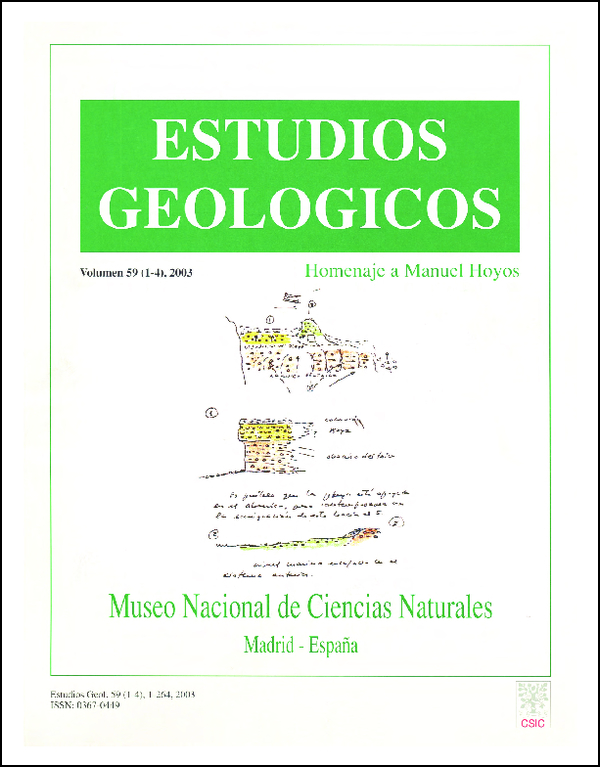Dataciones radiometricas (14C y K/Ar) del Teide y el Rift noroeste, Tenerife, Islas Canarias
DOI:
https://doi.org/10.3989/egeol.03591-479Keywords:
Teide, Tenerife, C-14 and K/Ar dating, geological hazard, eruptive hazardAbstract
Teide volcano, the highest volcano on earth (3,718 m a.s.l., > 7 km high) after Mauna Loa and Mauna Kea in the Hawaiian Islands, forms a volcanic complex in the centre of the island of Tenerife. Its most recent eruptive activity (last 20 Ka) is associated with the very active NW branch of the 120" triple rift system of the island. Most of the eruptions of Tenerife during the past 20 Ka have occurred along these volcanic features, frequently in the production of extensive mafic and felsic lava flows, many of which reached the coast, crossing what is now one of the most densely populated areas of Tenerife and of any oceanic island in the world. However, despite numerous previous studies, very important basic geological information is still lacking, in particular dating of these flows to construct a geochronological framework for the evolution of the Teide-NW rift system, and a scientifically based, much needed volcanic hazard assessment. New carbon- 14 ages, obtained via coupled mass spectrometry (other in progress), provide important time constraints on the evoliition of Teide's volcanic system, the frequency and distribution of its eruptions, and associated volcanic hazards. Most of the eruptions are not related to the Teide stratovolcano, which apparently had only one eruption in the last 20 Ka about 1,240 f 60 years BP (between 1,287 CAL years BP and 1,007 CAL years BP, corresponding to a time interval between the VI1 and X centuries, 663 years AD to 943 years AD), but to the Pico Viejo volcano (17,570 f 150 years BP), flank parasitic vents (Mña. Abejera upper vent, 5,170 f 110 years BP; Mña. Abejera lower vent, 4,790 f 70 years BP; Mña. de La Angostura early, 2,420 f 70 years BP; Mña. La Angostura late, 2,010 f 60 years BP and Roques Blancos, 1,790 f 60 years BP) and the NW rift (Mña. Chío, 3,620 f 70 years BP). Although the volcanic activity during the past 20 Ka involved at least 7 voluminous phonolitic flank vents in the northem, more unstable slopes of Teide, it took place without any apparent response of the volcano; on the contrary, these eruptions seemed to progressively buttress and enhance the stability of Teide Volcano. Conversely, the occurrence of these flank eruptions, combined with the Pico Viejo and NW rift eruptions, poses a very high lava-flow risk to the now densely populated areas in north and west Tenerife, which have been almost entirely resurfaced during the past 20,000 years.
Downloads
Downloads
Published
How to Cite
Issue
Section
License
Copyright (c) 2003 Consejo Superior de Investigaciones Científicas (CSIC)

This work is licensed under a Creative Commons Attribution 4.0 International License.
© CSIC. Manuscripts published in both the print and online versions of this journal are the property of the Consejo Superior de Investigaciones Científicas, and quoting this source is a requirement for any partial or full reproduction.
All contents of this electronic edition, except where otherwise noted, are distributed under a Creative Commons Attribution 4.0 International (CC BY 4.0) licence. You may read the basic information and the legal text of the licence. The indication of the CC BY 4.0 licence must be expressly stated in this way when necessary.
Self-archiving in repositories, personal webpages or similar, of any version other than the final version of the work produced by the publisher, is not allowed.















